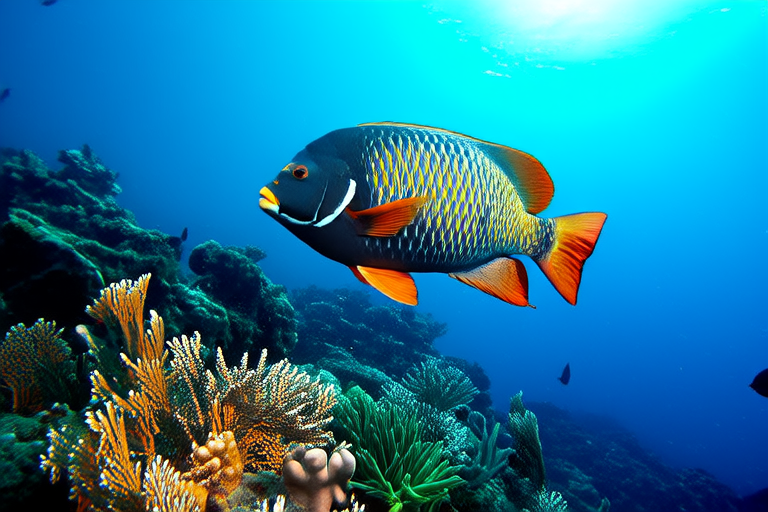Transforming Your Tank: The Ultimate Guide to Keeping Parrot Fish Happy
Welcome to the world of vibrant and captivating parrot fish! These colorful creatures can add a splash of color and life to any aquarium. Whether you’re a beginner or an experienced aquarist, this guide will help you understand how to provide your parrot fish with the best possible environment. Let’s dive into the essentials of keeping these beautiful fish happy and healthy.
Parrot Fish Care
Parrot fish are known for their striking colors and unique personalities. Originating from Central America, they are popular among aquarists due to their ability to adapt to various environments. However, to keep them thriving, it’s crucial to understand their specific needs.
Parrot fish require a balanced diet, regular water changes, and a spacious tank that accommodates their active nature. They are omnivorous, meaning they eat both plant matter and small animals. Providing a variety of foods ensures that they get all the necessary nutrients.
Tank Setup
Setting up the right tank for your parrot fish is vital. A minimum tank size of 75 gallons is recommended to accommodate their size and activity level. Ensure the tank has plenty of hiding spots, such as caves or plants, which mimic their natural habitat. Decorative rocks and driftwood can also be used to create a more natural environment.
The substrate should be soft to prevent injury to their delicate mouths. Sand is often preferred over gravel because it mimics their natural environment and reduces the risk of fin nips. Additionally, a robust filtration system is necessary to maintain water quality and remove waste effectively.
Water Parameters
Maintaining optimal water conditions is key to the health of your parrot fish. Water temperature should be kept between 74°F and 82°F (23°C and 28°C). pH levels should range from 6.5 to 8.0, and hardness should be between 5 and 15 dGH. Regular testing and monitoring of these parameters are essential to ensure a stable environment.
Adequate oxygenation is also important. Consider adding an air pump or water movement devices to enhance oxygen levels in the water. This can prevent stress and respiratory issues in your fish.
Diet
Parrot fish are omnivores and require a varied diet to stay healthy. Their diet should include high-quality flake food, pellets, and frozen or live foods. Foods rich in vitamins and minerals, such as spirulina-based flakes, can promote vibrant colors and overall health. Additionally, offering vegetables like spinach, peas, and zucchini can provide essential nutrients.
It’s important to avoid overfeeding, as excess food can lead to poor water quality and health issues. Feed your parrot fish twice daily, providing only what they can consume within a few minutes.
Compatibility with Other Fish
Choosing tank mates for your parrot fish requires careful consideration. Due to their territorial nature, they may not get along with smaller or slower-moving fish. Suitable companions include larger, peaceful species that can hold their own in the tank. Some good options include angelfish, silver dollars, and other large cichlids.
Avoid keeping parrot fish with aggressive or fin-nipping species, as this can lead to conflicts and stress. Always research the temperament and size of potential tank mates before introducing them to your aquarium.
Common Health Issues
Like any other fish, parrot fish are susceptible to certain health issues. One common problem is fin rot, which can occur when water quality is poor or if fish are stressed. Symptoms include frayed or discolored fins. To prevent fin rot, maintain excellent water quality and quarantine new fish before introducing them to the main tank.
Another issue is swim bladder disorder, which can cause buoyancy problems. This condition can result from overfeeding or constipation. Feeding your parrot fish a varied diet and ensuring they don’t overeat can help prevent this. If symptoms persist, consult a veterinarian specializing in aquatic animals.
Enrichment Activities
To keep your parrot fish mentally stimulated and physically active, incorporate enrichment activities into their routine. Floating toys or sinking treats can encourage exploration and natural behaviors. Providing structures for them to interact with, such as caves or tunnels, can also enhance their well-being.
Consider rearranging tank decorations periodically to stimulate curiosity and provide new experiences. This can prevent boredom and promote a healthier, more engaged lifestyle for your parrot fish.
Conclusion
By following the guidelines outlined in this ultimate guide, you’ll be well-equipped to provide your parrot fish with a thriving and enjoyable environment. Remember, creating a comfortable and enriching space for your fish is an ongoing process that requires attention and dedication. With the right care and commitment, your parrot fish will reward you with years of vibrant beauty and companionship.
